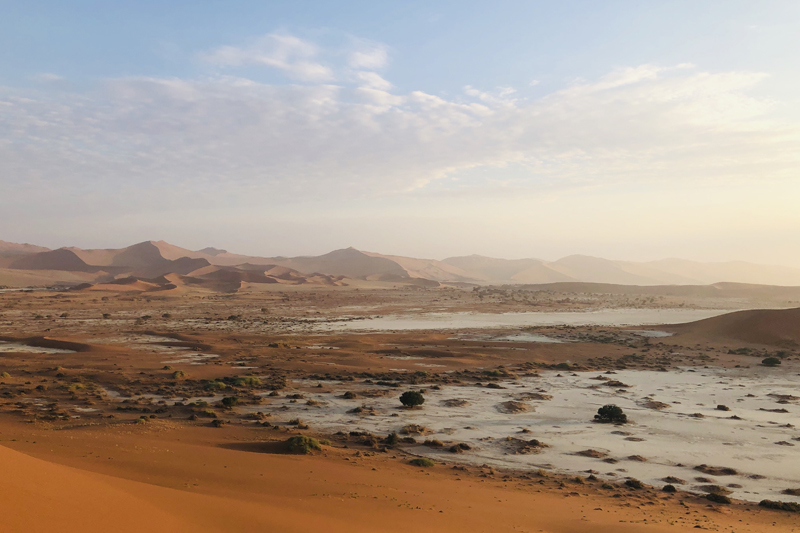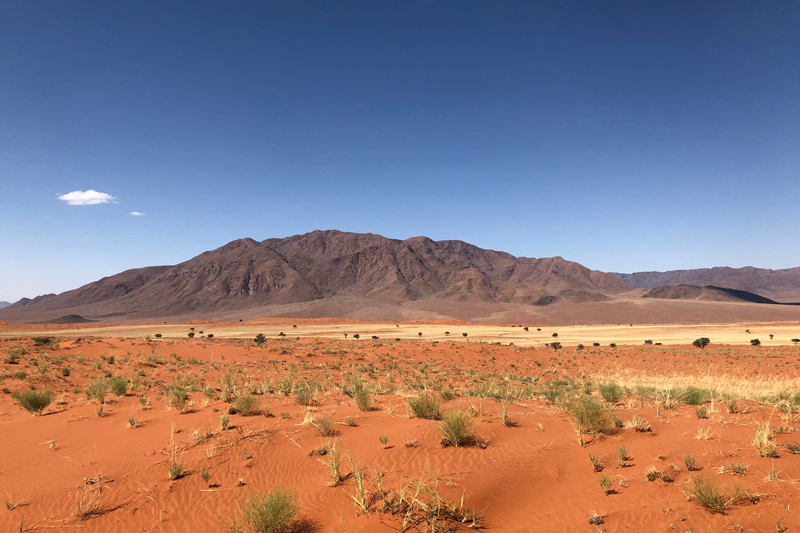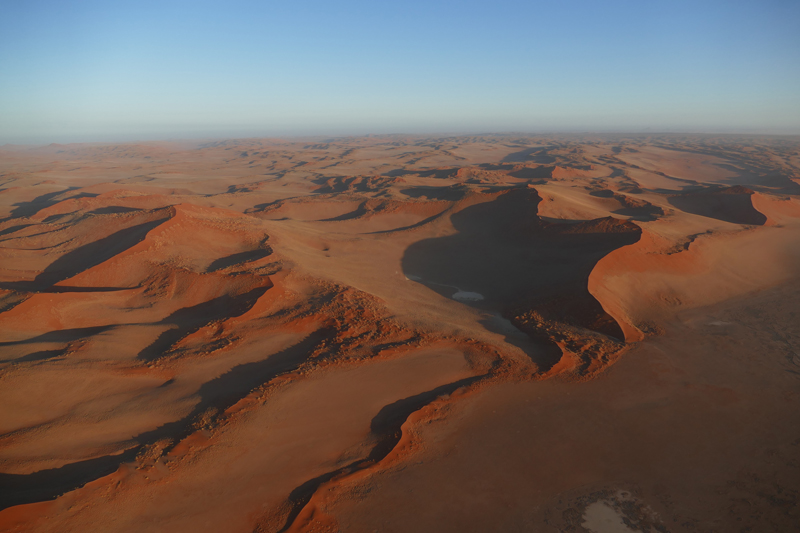The Namib Desert Including Sossusvlei
The Namib Desert should be included on any visit to Namibia, and is, quintessentially, what the country is about.
The main Namib Naukluft National Park extends from the Luderitz area in the south to the Walvis Bay/Swakopmund area in the north, and inland to cover much of the vast Namib dune belt.
Within the National Park itself lie the renowned Sossusvlei dunes, which rise some 300m from valley floor. Sossusvlei is a huge dried up clay pan formed at the end of the Tsauchab River where the huge dunes stopped its progress toward the sea. Nearby are two other pans, Hidden Vlei and Dead Vlei. If you’re feeling fit, you can climb the dunes for a spectacular view of the surrounding area.
The Sesriem Canyon is one of the most amazing features of this desert. Here, the Tsauchab River has carved a gorge (up to 100 ft deep) into the gravels deposited around 16 million years ago. The canyon dates back to about 3 million years ago, when continental uplift caused the incision of most of the westward flowing rivers in Namibia. The canyon is about a kilometre long and becomes shallower as it makes its way towards Sossusvlei.



Bordering the park, the two most significant conservancies are the Kulala Conservancy and the Namib Rand Nature Reserve. The Namib Rand is huge, covering some 1800 sq.kms., and is stunningly beautiful with a mix of sand dunes and gravel plains, flanked on all sides by rugged mountains. There is a significant amount of wildlife, including oryx, springbok, mountain zebra, giraffe, bat-eared fox, ostrich and the occasional leopard or cheetah. Although it is possible to reach the Sossusvlei dunes on a day trip from the northern section of the Namib Rand, a visit to this conservancy can also combine well with a stay closer to Sossusvlei.
The Kulala Conservancy is closer to Sesriem and although much smaller than the Namib Rand, has direct access into the National Park so is ideal for those with limited time in the region.

